Redesign and Implementation of the Electromagnetism Course for Engineering Students Using the Backward Design Methodology
Abstract
1. Introduction
- Cooperative learning is the instructional strategy of using small groups in which students collaborate to optimize both their own and each other′s learning, as described by the authors in [12]. These authors indicate that cooperative learning has a connection to collaborative learning, which highlights how the community has an impact on learning.
- Collaborative learning allows students to negotiate the boundaries between the knowledge communities they belong to and the professors′ community via collaborative activities [13].
- Problem-based learning (PBL) is a teaching strategy that allows students the freedom to conduct independent research, combine theory and practice, and apply their skills and knowledge to come up with a solution to a problem [14]. In fact, PBL is very commonly employed in higher education across a variety of subject areas, from those relating to the health sciences to those pertaining to engineering [15,16].
2. Related Research
2.1. The Backward Design Method
2.2. Definition of Scientific Competence
3. Theoretical Background
3.1. Backward Design Application in an Electromagnetism Course
- Explain the causes that give rise to the laws that describe electrostatic and magnetostatic phenomena both in a vacuum and in matter;
- Formulate hypotheses about the known effects of electric and magnetic fields on electric charges for the construction and elaboration of simple and complex electric circuits;
- Apply the basic concepts of electromagnetism to propose alternative solutions to engineering problems;
- Reflect on the results of laboratory practice, carrying out an analysis of the implicit physical phenomena and presenting them with the standard criteria followed by the IEEE (Institute of Electrical and Electronics Engineers).
- The generation of laboratory reports that show skills in the interpretation of graphs, argues in response to questions about electromagnetic phenomena, and alternative solutions to problems;
- The solution of tests and resolution of problems elaborated by competencies according to the guidelines of the MEN (Ministry of Education, Colombia);
- The conceptualization of tests about the proposed problems at the end of the forums.
- The elaboration of scientific reports using IEEE standards;
- Competency-based exam founded on the socialization of the rubric;
- Videos showing the development of homemade electromagnetic experiences.
- IEEE article-type laboratory reports;
- Essays according to the topics addressed in the forums;
- Short videos of homemade electromagnetic experiments;
- Written exams on the thematic axis;
- Conceptualization test results.
3.2. Most Outstanding Learning Experiences Developed in the Course
4. Results
5. Conclusions
Author Contributions
Funding
Institutional Review Board Statement
Informed Consent Statement
Data Availability Statement
Conflicts of Interest
Abbreviations
| CDIO | Conceive, Design, Implement, and Operate real-world systems and products |
| BD | Backward Design |
| MEN | Ministry of Education, Colombia |
| PISA | Program for International Student Assessment |
| IEEE | Institute of Electrical and Electronics Engineers |
| HOTS | Higher Order Thinking Skills |
References
- OECD. The Nature of Learning: Using Research to Inspire Practice; Educational Research and Innovation; Dumont, H., Istance, D., Benavides, F., Eds.; OECD: Paris, France, 2010; ISBN 978-92-64-08647-0. [Google Scholar]
- UNESCO. Education for Sustainable Development Toolkit; UNESCO: Paris, France, 2006. [Google Scholar]
- Kamruzzaman, M.M.; Alanazi, S.; Alruwaili, M.; Alshammari, N.; Elaiwat, S.; Abu-Zanona, M.; Innab, N.; Mohammad Elzaghmouri, B.; Ahmed Alanazi, B. AI- and IoT-Assisted Sustainable Education Systems during Pandemics, Such as COVID-19, for Smart Cities. Sustainability 2023, 15, 8354. [Google Scholar] [CrossRef]
- Kanetaki, Z.; Stergiou, C.; Troussas, C.; Sgouropoulou, C. Development of an Innovative Learning Methodology Aiming to Optimise Learners’ Spatial Conception in an Online Mechanical CAD Module During COVID-19 Pandemic. Front. Artif. Intell. Appl. 2021, 338, 31–39. [Google Scholar] [CrossRef]
- Kanetaki, Z.; Stergiou, C.; Bekas, G.; Troussas, C.; Sgouropoulou, C. Data Mining for Improving Online Higher Education Amidst COVID-19 Pandemic: A Case Study in the Assessment of Engineering Students. Front. Artif. Intell. Appl. 2021, 338, 157–165. [Google Scholar] [CrossRef]
- Hernández-de-Menéndez, M.; Guevara, A.V.; Martínez, J.C.T.; Alcántara, D.H.; Morales-Menendez, R. Active Learning in Engineering Education. A Review of Fundamentals, Best Practices and Experiences. Int. J. Interact. Des. Manuf. 2019, 13, 909–922. [Google Scholar] [CrossRef]
- Ford, N. Recent Approaches to the Study and Teaching of ‘Effective Learning’ in Higher Education. Rev. Educ. Res. 1981, 51, 345–377. [Google Scholar] [CrossRef]
- Freeman, S.; Eddy, S.L.; McDonough, M.; Smith, M.K.; Okoroafor, N.; Jordt, H.; Wenderoth, M.P. Active Learning Increases Student Performance in Science, Engineering, and Mathematics. Proc. Natl. Acad. Sci. USA 2014, 111, 8410–8415. [Google Scholar] [CrossRef] [PubMed]
- Asok, D.; Abirami, A.M.; Angeline, N.; Lavanya, R. Active Learning Environment for Achieving Higher-Order Thinking Skills in Engineering Education. In Proceedings of the 2016 IEEE 4th International Conference on MOOCs, Innovation and Technology in Education (MITE), Madurai, India, 9–10 December 2016; pp. 47–53. [Google Scholar]
- Chen, M.; Lv, C.; Wang, X.; Li, L.; Yang, P. A Critical Review of Studies on Coopetition in Educational Settings. Sustainability 2023, 15, 8370. [Google Scholar] [CrossRef]
- Prince, M. Does Active Learning Work? A Review of the Research. J. Eng. Educ. 2004, 93, 223–231. [Google Scholar] [CrossRef]
- Johnson, D.W.; Johnson, R.T. Cooperative Learning: The Foundation for Active Learning. Act. Learn. Future 2019, 5, 59–71. [Google Scholar] [CrossRef]
- Bruffee, K.A. Sharing Our Toys:Cooperative Learning Versus Collaborative Learning. Change Mag. High. Learn. 1995, 27, 12–18. [Google Scholar] [CrossRef]
- Savery, J.R. Overview of Problem-Based Learning: Definitions and Distinctions. Interdiscip. J. Probl. Based Learn. 2006, 1, 1002. [Google Scholar] [CrossRef]
- Ricaurte, M.; Viloria, A. Project-Based Learning as a Strategy for Multi-Level Training Applied to Undergraduate Engineering Students. Educ. Chem. Eng. 2020, 33, 102–111. [Google Scholar] [CrossRef]
- Ricaurte, M.; Ordóñez, P.E.; Navas-Cárdenas, C.; Meneses, M.A.; Tafur, J.P.; Viloria, A. Industrial Processes Online Teaching: A Good Practice for Undergraduate Engineering Students in Times of COVID-19. Sustainability 2022, 14, 4776. [Google Scholar] [CrossRef]
- Cuadrado-Gallego, J.J.; Gómez, J.; Tayebi, A.; Usero, L.; Hellín, C.J.; Valledor, A. LearningRlab: Educational R Package for Statistics in Computer Science Engineering. Sustainability 2023, 15, 8246. [Google Scholar] [CrossRef]
- Versteijlen, M.; Wals, A.E.J. Developing Design Principles for Sustainability-Oriented Blended Learning in Higher Education. Sustainability 2023, 15, 8150. [Google Scholar] [CrossRef]
- Aguas-Núñez, R.; Vergara-Vásquez, E.L.; Barraza-Heras, C.; Mercado-Garcia, A. Aplicación de la metodología backward design para el diseño curricular de la especialización en gestión y legislación ambiental. In Proceedings of the Encuentro Internacional de Educación en Ingenier, Cartagena, Colombia, 21–24 September 2021. [Google Scholar]
- Wiggins, G.; McTighe, J. Undertanding by Design (Curriculum Development); Vanderbilt Center for Teaching: Nashville, TN, USA, 2005; ISBN 978-64686-0-0. [Google Scholar]
- Wiggings, G.; McTighe, J. What Is Backward Design? In Understanding by Design; Merrill Prentice Hall: Hoboken, NJ, USA, 2001; pp. 7–19. [Google Scholar]
- Dolan, E.; Collins, J. We Must Teach More Effectively: Here Are Four Ways to Get Started. Mol. Biol. Cell 2015, 26, 2151–2155. [Google Scholar] [CrossRef]
- Fink, L. Creating Significant Learning Experiences: An Integrated Approach to Designing College Courses; Wiley: Hoboken, NJ, USA, 2005. [Google Scholar]
- Adams, T.; Jameel, S.M.; Goggins, J. Education for Sustainable Development: Mapping the SDGs to University Curricula. Sustainability 2023, 15, 8340. [Google Scholar] [CrossRef]
- Handelsman, J.; Ebert-May, D.; Beichner, R.; Bruns, P.; Chang, A.; DeHaan, R.; Gentile, J.; Lauffer, S.; Stewart, J.; Tilghman, S.M.; et al. Scientific Teaching. Science 2004, 304, 521–522. [Google Scholar] [CrossRef]
- Sharkey, S.; Weimer, M. Learner-Centered Teaching: Five Key Changes to Practice. Teach. Sociol. 2003, 31, 251. [Google Scholar] [CrossRef]
- Yin, R. Case Study Research: Design and Methods; Sage: Los Angeles, CA, USA, 2014. [Google Scholar]
- Merriam, S. Qualitative Research: A Guide to Design and Implementation; Jossey-Bass: San Francisco, CA, USA, 2009. [Google Scholar]
- Stake, R. Multiple Case Study Analysis; Guilford: New York, NY, USA, 2006. [Google Scholar]
- Hosseini, H.; Chalak, A.; Biria, R. Impact of Backward Design on Improving Iranian Advanced Learners’ Writing Ability: Teachers’ Practices and Beliefs. Int. J. Instr. 2019, 12, 33–50. [Google Scholar] [CrossRef]
- Wiese, J.; Buehler, R.; Griffin, D. Backward Planning: Effects of Planning Direction on Predictions of Task Completion Time. Judgm. Decis. Mak. 2016, 11, 147–167. [Google Scholar] [CrossRef]
- Michael, N.A.; Libarkin, J.C. Understanding by Design: Mentored Implementation of Backward Design Methodology at the University Level. Bioscene J. Coll. Biol. Teach. 2016, 42, 44–52. [Google Scholar]
- Richards, J. Curriculum Approaches in Language Teaching: Forward, Central, and Backward Design. RELC J. 2013, 44, 5–33. [Google Scholar] [CrossRef]
- Kantorski, B.; Sanford-Dolly, C.; Commisso, D.; Pollock, J. Backward Design as a Mobile Application Development Strategy. Educ. Technol. Res. Dev. 2019, 67, 711–731. [Google Scholar] [CrossRef] [PubMed]
- Paesani, K. Redesigning an Introductory Language Curriculum: A Backward Design Approach. L2 J. 2017, 9. [Google Scholar] [CrossRef]
- OCDE. Marco de Evaluación y de Análisis de PISA Para El Desarrollo-Lectura, Matemáticas Y Ciencias; Organización para la Cooperación y el Desarrollo Económicos: Paris, France, 2017. [Google Scholar]
- González, J.D.; Escobar, J.H.; Sánchez, H.; De la Hoz, J.; Beltrán, J.R.; Arciniegas, S.M.; Martínez, L.S. Implementation and Evaluation of an Effective Computational Method That Promotes the Conceptualization of Newton’s Laws of Motion. J. Phys. Conf. Ser. 2019, 1247, 12042. [Google Scholar] [CrossRef]
- González, J.D.; Escobar, J.H.; Sánchez, H.; De la Hoz, J.; Beltrán, J.R.; Arciniegas, S.M.; Martínez, L.S. Impact of the Use of Virtual Laboratories of Electromagnetism in the Development of Competences in Engineering Students. J. Phys. Conf. Ser. 2019, 1247, 012018. [Google Scholar] [CrossRef]
- González, J.D.; Escobar, J.H.; Beltrán, J.R.; García-Gómez, L.; La Hoz, J.D. Virtual Laboratories of Electromagnetism for Education in Engineering: A Perception. J. Phys. Conf. Ser. 2019, 1391, 012157. [Google Scholar] [CrossRef]
- Berland, L.K.; Schwarz, C.V.; Krist, C.; Kenyon, L.; Lo, A.S.; Reiser, B.J. Epistemologies in Practice: Making Scientific Practices Meaningful for Students. J. Res. Sci. Teach. 2015, 53, 1082–1112. [Google Scholar] [CrossRef]
- Hofer, B.; Pintrich, P. The Development of Epistemological Theories: Beliefs About Knowledge and Knowing and Their Relation to Learning. Rev. Educ. Res. 1997, 67, 1088. [Google Scholar] [CrossRef]
- Kennedy, D.; Hyland, Á.; Ryan, N. Writing and Using Learning Outcomes: A Practical Guide; University College Cork: Cork, Ireland, 2007. [Google Scholar]
- Villa, A.; Poblete, M. Aprendizaje Basado En Competencias. Una Propuesta Para La Evaluación de Las Competencias Genéricas. Estud. Sobre Educ. 1970, 197, 3342. [Google Scholar] [CrossRef]
- Hake, R.R. Interactive-Engagement versus Traditional Methods: A Six-Thousand-Student Survey of Mechanics Test Data for Introductory Physics Courses. Am. J. Phys. 1998, 66, 64–74. [Google Scholar] [CrossRef]
- Sun, Y.; Fu, R. IKP-CDIO: Exploration and practice on teaching framework of embedding ideological education into engineering curriculum. In Proceedings of the ICEEL 21: 2021 5th International Conference on Education and E-Learning, Virtual, 5–7 November 2021; Association for Computing Machinery: New York, NY, USA, 2022; pp. 185–190. [Google Scholar] [CrossRef]
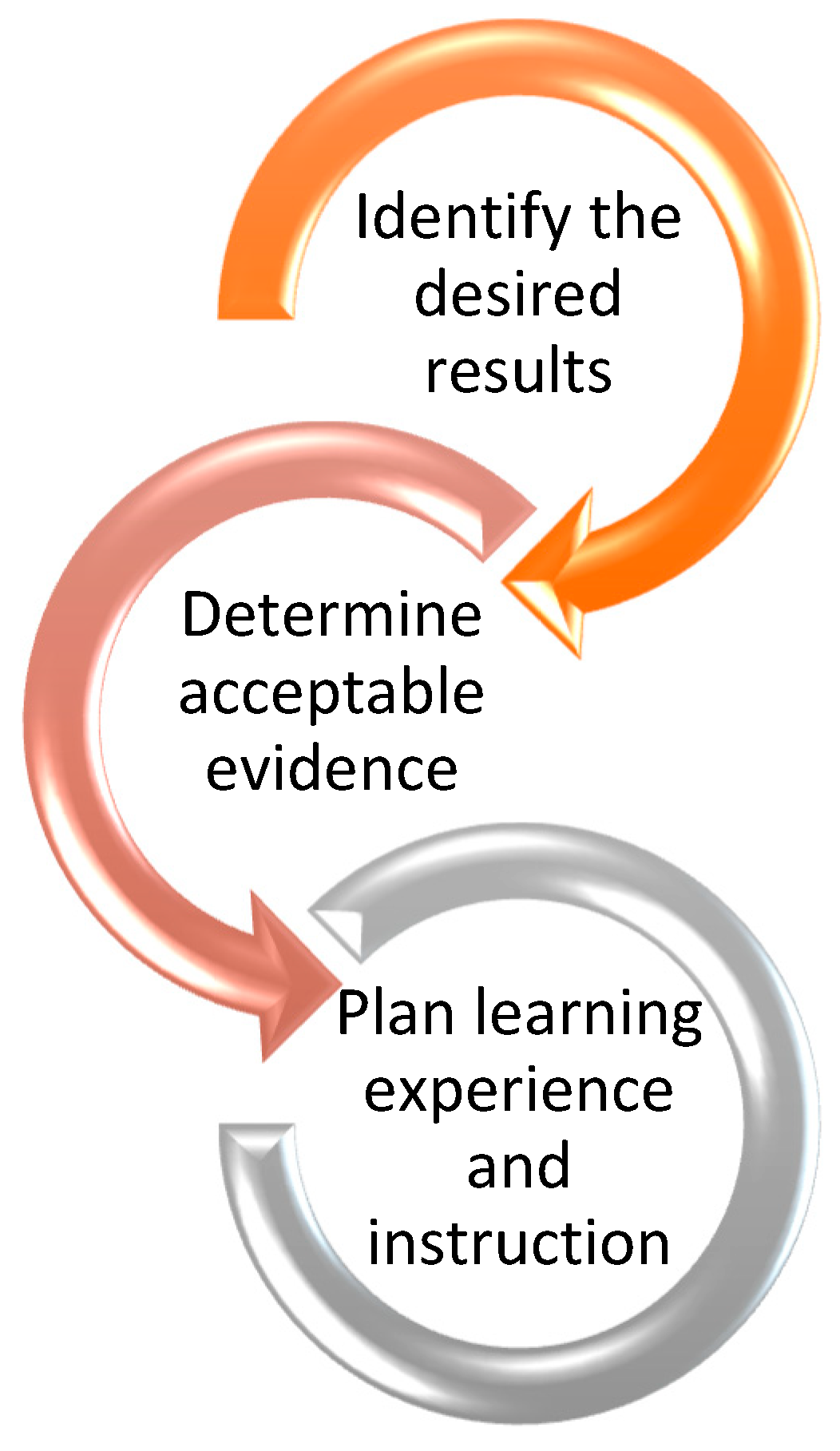

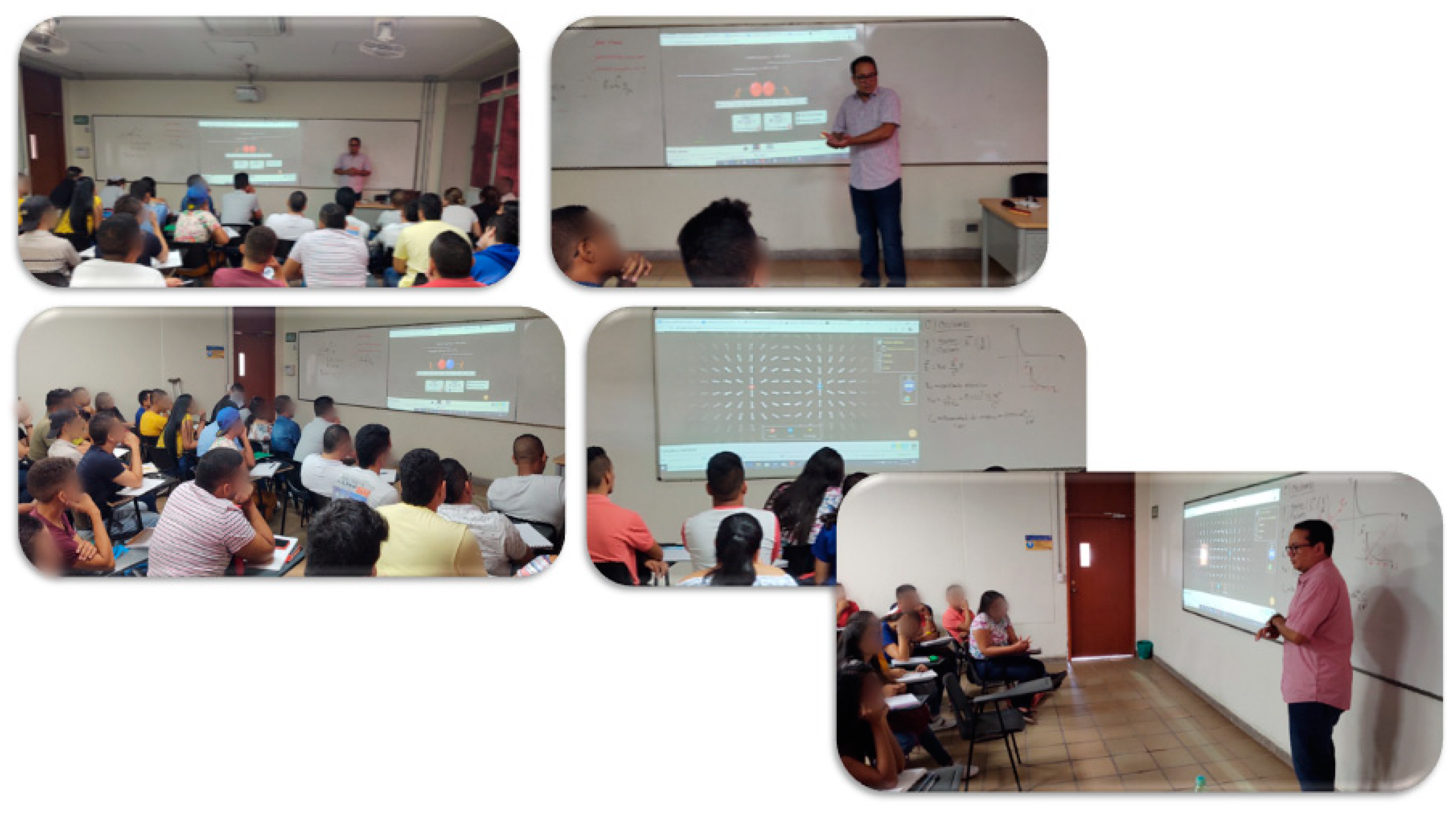
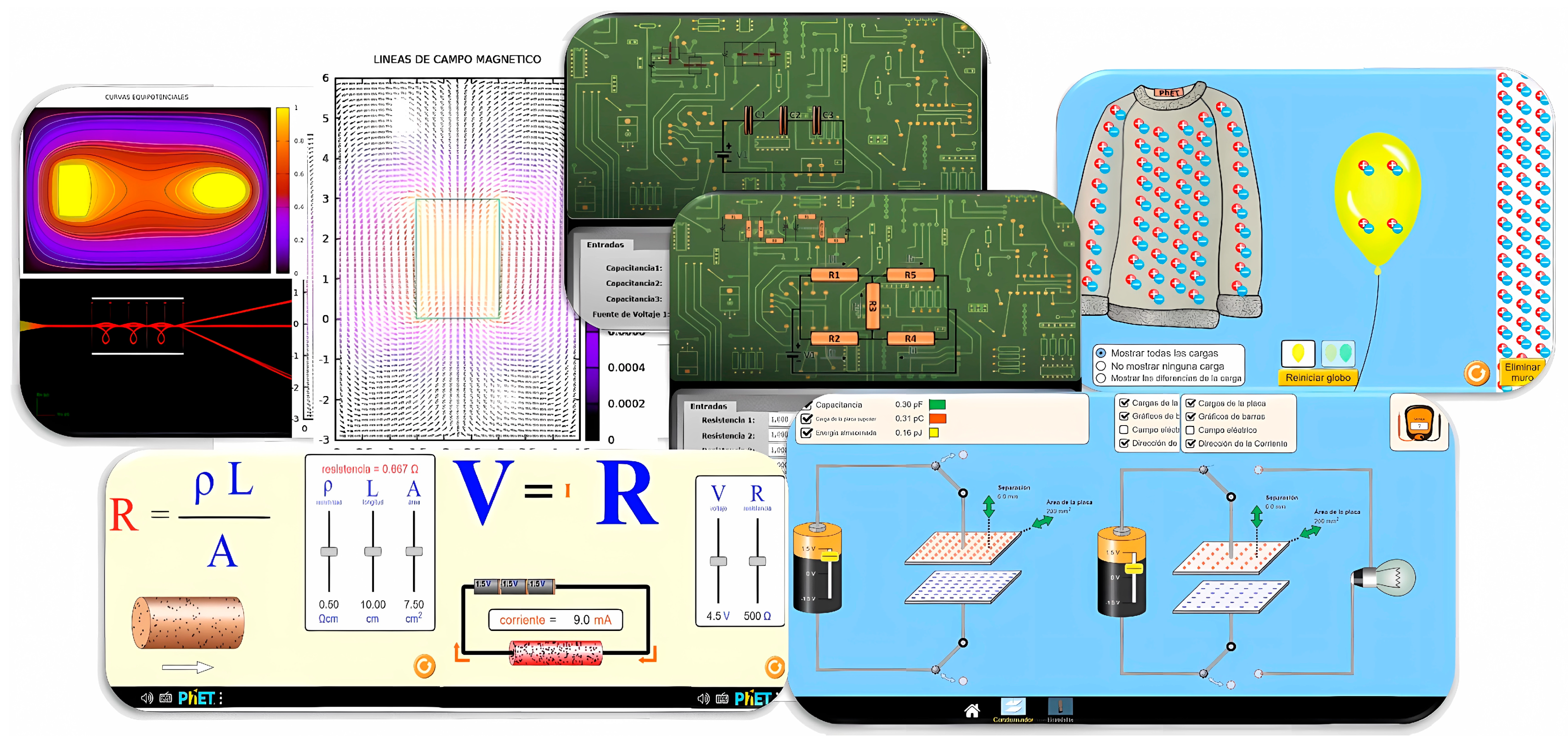
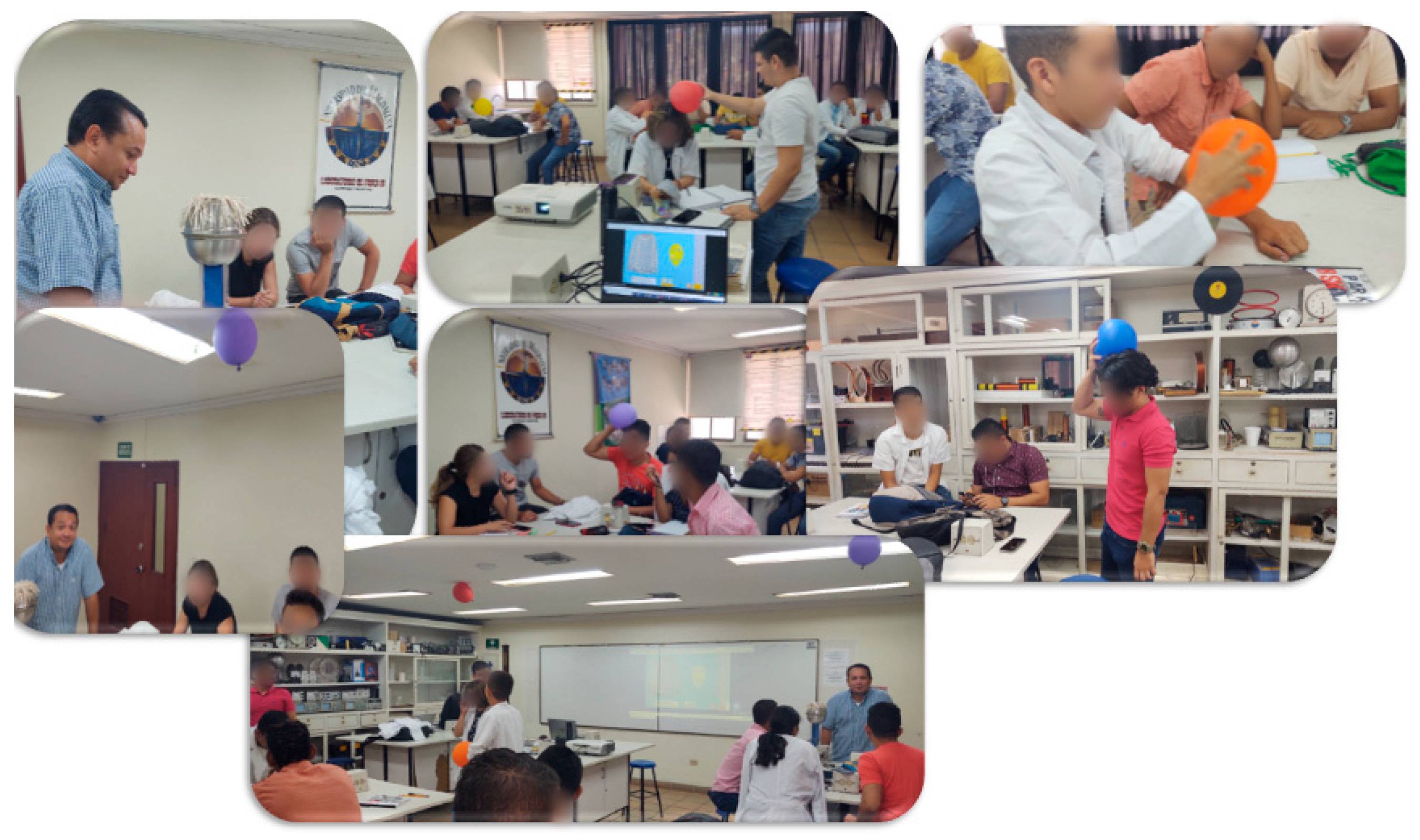


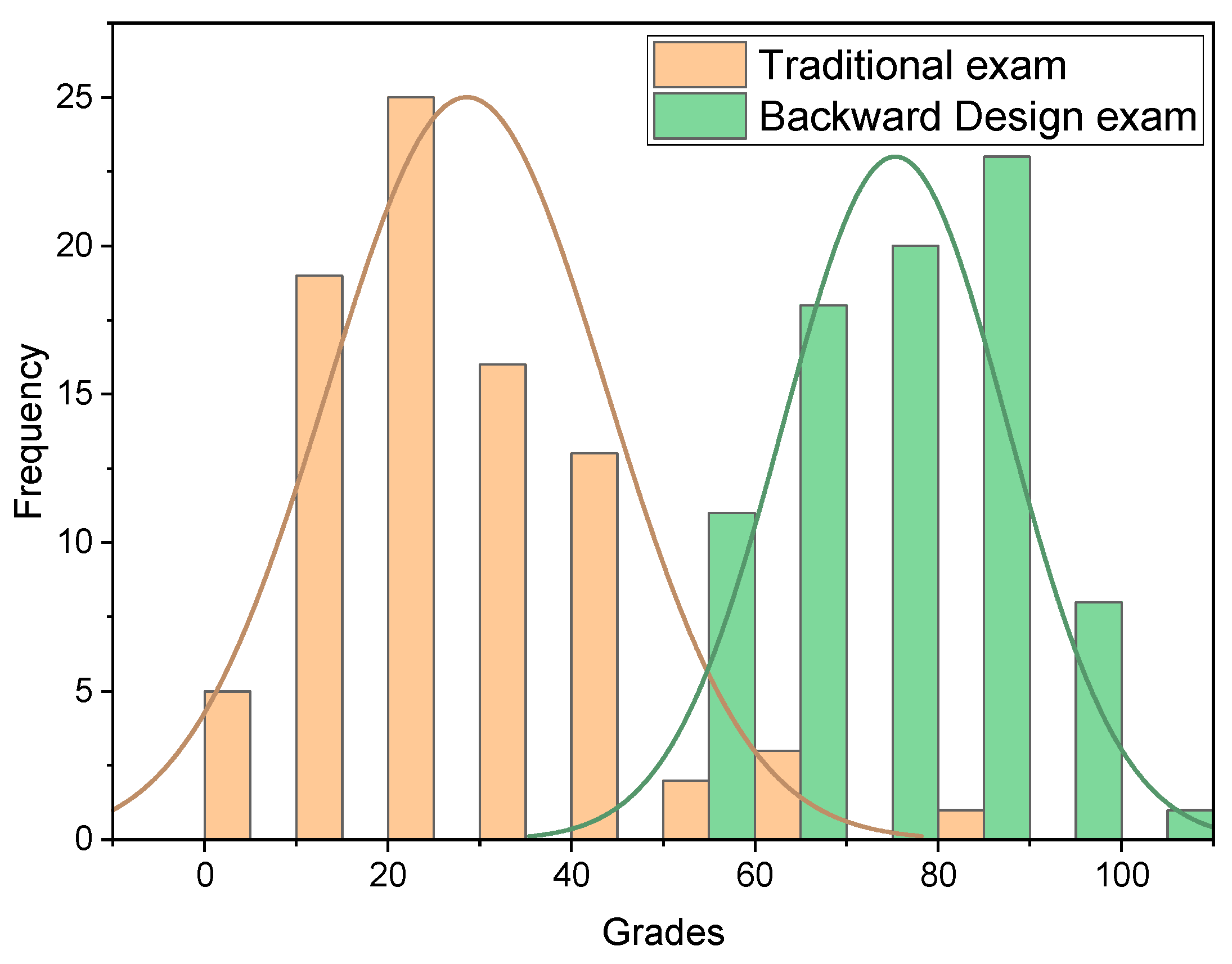
| All the Activities | Description | Benefits |
|---|---|---|
| Think about sharing the couple | Students are given a problem and asked to analyze it individually (Think). Next, they compare their results with those of their closest neighbors (Couple). Finally, the pairs present their conclusions to the whole class (Share). | It allows the teacher to determine students’ understanding of a topic and clear up misconceptions. Classes are more interactive and dynamic, increasing participation. In addition, this promotes student reflection on concepts and problems. |
| Group assignments | Students perform specific tasks collaboratively. | Promotes team and interpersonal skills |
| Roleplay | Students adopt a character to do a performance related to a certain situation. Participants then switch characters so that they all have a chance to take on all the roles. | Understanding of concepts and theories is enhanced. |
| Learning Outcomes | Methodologies and/or Pedagogies Proposed for Its Development | Main Contents to Develop | Resources |
|---|---|---|---|
| Explain the causes that give rise to the laws that describe electrostatic and magnetostatic phenomena both in a vacuum and in matter. |
| 1. Gauss’s Law and its Applications. 2. Properties of Materials: Conductors, Insulators and Semiconductors, Convection and Conduction Current. 3. Current Densities of Convection and Conduction. 4. Ohm’s Law. Polarization in Dielectrics. 5. Electrostatic Boundary Conditions: Dielectric-Dielectric, Conductor-Dielectric and Conductor-Free Space. 6. Fundamental Equations of Magnetostatics in Free Space. 7. Magnetic Dipole. Magnetic Moment. Magnetization of Materials, Magnetostatic Boundary Conditions, Inductance, and Inductors. 8. Magnetic Energy. Energy in terms of B and H. Magnetic Circuits, Classification of Magnetic Materials. | Virtual laboratories developed at the Universidad del Magdalena and the University of Colorado (USA) |
| Formulate hypotheses about the known effects of electric and magnetic fields on electric charges for the construction and elaboration of simple and complex electric circuits. |
| Real and home laboratories. | |
| Applies the basic concepts of electromagnetism and proposes alternative solutions to engineering problems. |
| Conferences and Forums |
| Pre Test | |||||||||||||||||
|---|---|---|---|---|---|---|---|---|---|---|---|---|---|---|---|---|---|
| Questions | 1 | 2 | 3 | 4 | 5 | 6 | 7 | 8 | 9 | 10 | 11 | 12 | 13 | 14 | 15 | Total | % |
| Correct | 31 | 19 | 21 | 18 | 7 | 10 | 19 | 12 | 32 | 25 | 21 | 13 | 21 | 7 | 10 | 266 | 30% |
| Wrong | 28 | 40 | 38 | 41 | 52 | 49 | 40 | 47 | 27 | 34 | 38 | 46 | 38 | 52 | 49 | 619 | 70% |
| Post Test | |||||||||||||||||
|---|---|---|---|---|---|---|---|---|---|---|---|---|---|---|---|---|---|
| Questions | 1 | 2 | 3 | 4 | 5 | 6 | 7 | 8 | 9 | 10 | 11 | 12 | 13 | 14 | 15 | Total | % |
| Correct | 56 | 51 | 49 | 45 | 31 | 51 | 47 | 46 | 48 | 50 | 43 | 48 | 46 | 40 | 50 | 703 | 79% |
| Wrong | 3 | 8 | 10 | 14 | 28 | 8 | 12 | 13 | 11 | 9 | 16 | 11 | 13 | 19 | 7 | 182 | 21% |
Disclaimer/Publisher’s Note: The statements, opinions and data contained in all publications are solely those of the individual author(s) and contributor(s) and not of MDPI and/or the editor(s). MDPI and/or the editor(s) disclaim responsibility for any injury to people or property resulting from any ideas, methods, instructions or products referred to in the content. |
© 2023 by the authors. Licensee MDPI, Basel, Switzerland. This article is an open access article distributed under the terms and conditions of the Creative Commons Attribution (CC BY) license (https://creativecommons.org/licenses/by/4.0/).
Share and Cite
González, J.; Martínez, L.; Aguas, R.; De La Hoz, J.; Sánchez, H. Redesign and Implementation of the Electromagnetism Course for Engineering Students Using the Backward Design Methodology. Sustainability 2023, 15, 12152. https://doi.org/10.3390/su151612152
González J, Martínez L, Aguas R, De La Hoz J, Sánchez H. Redesign and Implementation of the Electromagnetism Course for Engineering Students Using the Backward Design Methodology. Sustainability. 2023; 15(16):12152. https://doi.org/10.3390/su151612152
Chicago/Turabian StyleGonzález, Jesús, Liliana Martínez, Roberto Aguas, Jhon De La Hoz, and Henry Sánchez. 2023. "Redesign and Implementation of the Electromagnetism Course for Engineering Students Using the Backward Design Methodology" Sustainability 15, no. 16: 12152. https://doi.org/10.3390/su151612152
APA StyleGonzález, J., Martínez, L., Aguas, R., De La Hoz, J., & Sánchez, H. (2023). Redesign and Implementation of the Electromagnetism Course for Engineering Students Using the Backward Design Methodology. Sustainability, 15(16), 12152. https://doi.org/10.3390/su151612152








